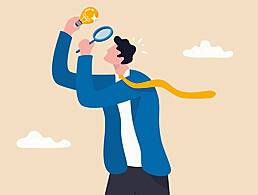Want to try a digital detox but not sure where to start? We asked for advice from people who’ve taken steps to build a healthy relationship with their tech devices.
With all the ‘new year, new me’ good intentions that come in January, many people may have considered a digital detox as a 2021 resolution. But as January becomes February, these annual commitments to betterment tend to lose momentum.
Never fear, however, as we’re here to help with some tried and tested tips for maintaining a healthy relationship with digital devices and online media.
“We can slip into an always-on mode and a digital detox is a great way to hit reset by taking a break from our smartphones, computers and social media platforms,” said Joe Tynan, digital leader at PwC Ireland.
“Digital can improve our lives in many ways but only if we make it work for us, and if we become a slave to our devices then it can be unhealthy,” he warned.
1. Set some limits
For Tynan, step one in a digital detox is to do away with ‘always on’ and designate some tech-free hours in your day. “With many people being on their digital devices more than three hours a day, having a clear rule about when you switch on and off is good discipline,” he advised.
Breaking the habit of being always on can be challenging, but there are tools that can help. “I’ve never been brave enough for a complete detox but I put time limits on my social media apps,” said Andrea Borain, a marketing executive at William Fry who has a tendency to “go down the rabbit hole of top 10 travel destination clips”.
There’s also a simple analogue way to break the cycle of device addiction. “I also try to leave my phone at home if I go on a walk to truly embrace nature’s potential,” Borain added.
2. Less doomscrolling, more joyscrolling
“Some social media accounts may help us connect with people, but sometimes we may not benefit by spending more time online,” said Tynan, who recommends you take stock of the social media you use and “only engage with those social media accounts you trust and that give you value”.
This focus on the digital services you value can be carried through in a review of all your apps. “Apps can absorb your attention as well as take up memory space,” said Tynan. He advised that we keep the must-have apps that add real value and dispense with the rest. “For example, a digital fitness app like PwC’s may be invaluable in your efforts to become more digitally savvy, but in a fun way.”
It’s important in your digital detox journey to realise that not all digital interactions are bad, and you don’t have to throw out the good stuff in your effort to clean house. “We can try to be more aware but should not beat ourselves up when it comes to digital detoxing as technology is addictive,” said Michelle McDaid, director of engineering at Workhuman. “While switching off is important, a healthy relationship with technology is achievable, especially when it involves gratitude.”
McDaid said she accentuates the positive in her digital life through an employee recognition product from Workhuman, which enables colleagues to thank each other and spread some positivity. “Each day I feel the benefit of this scrolling through our company newsfeed of messages.”
3. Turn off notifications
As a parent, McDaid’s digital detox motivation is somewhat inspired by her kids. “I am conscious of setting an example as I want to encourage my daughters that they too can switch off from technology and don’t always have to be on their phones.”
If you’ve whittled your digital life down to the essentials that give real value, the next step is muting any unnecessary notifications so that you are the one in control of your digital triggers.
“It can take more than 20 minutes to refocus on what you were doing after a distraction such as a notification on your phone,” Tynan revealed. “One easy fix is to turn off as many notifications as you can live without.”




